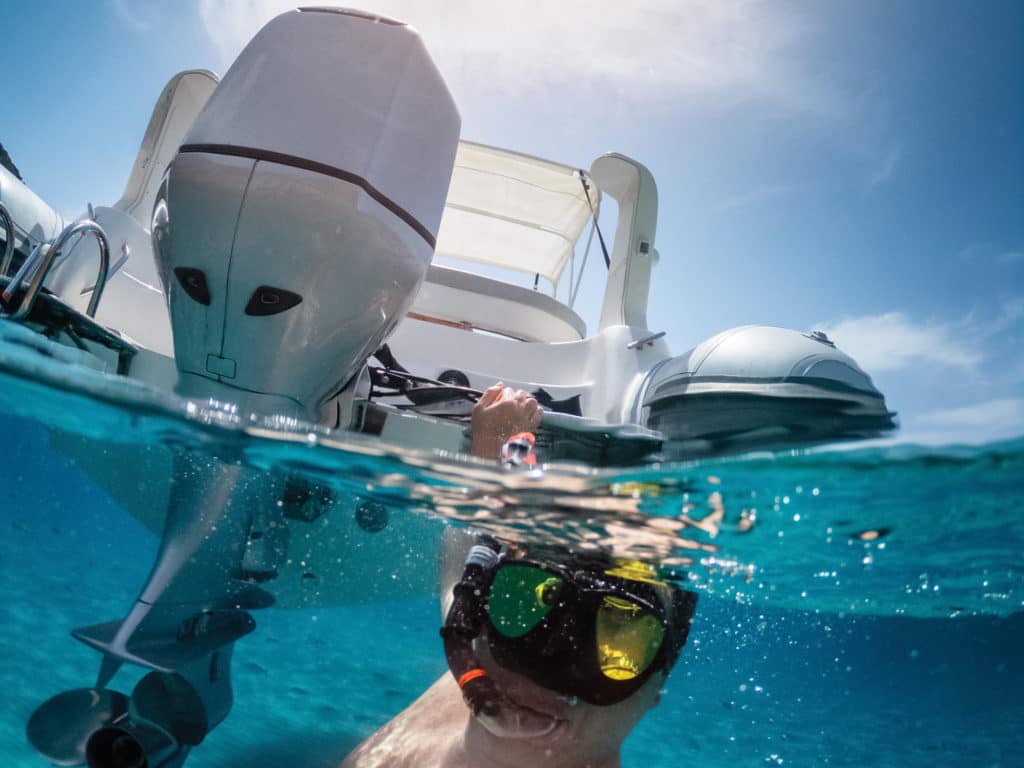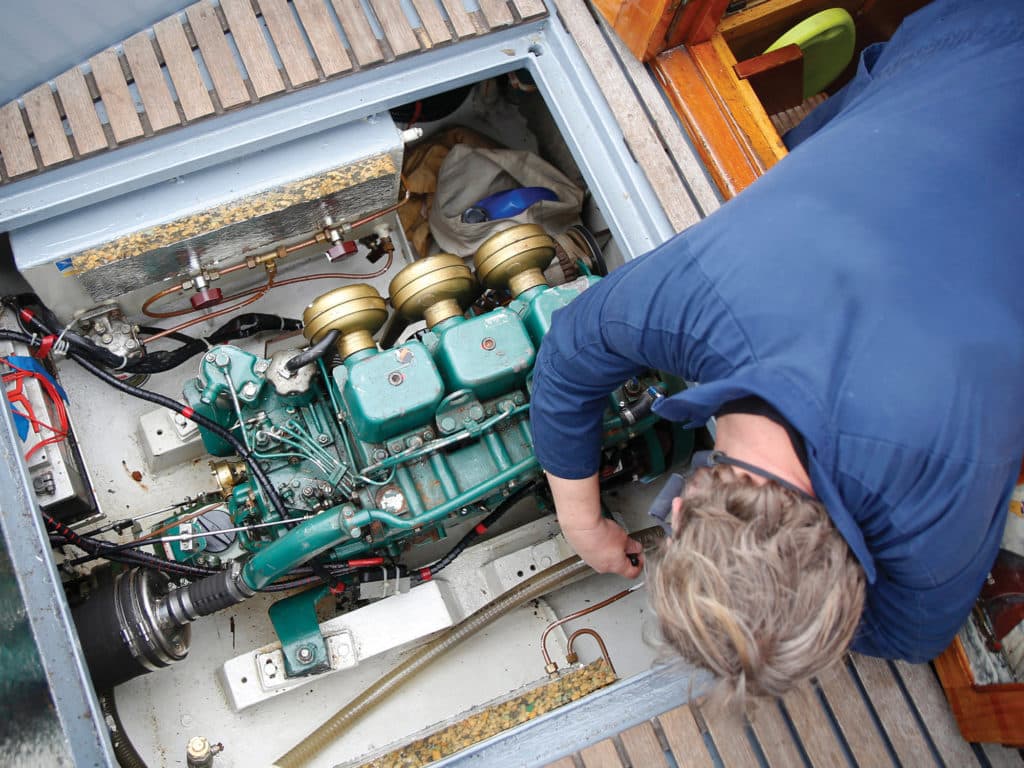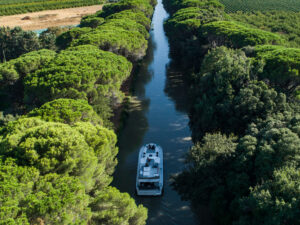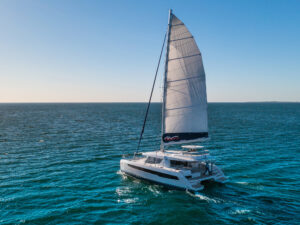
As sailors and boat owners, we are, by nature, inveterate tinkerers. A sailboat has so many intertwined systems that there is almost always something in need of our attention. It might be a clogged head (ick!), a blocked engine water intake, roller furling that is doing neither, or any of several million other things.
So it’s no surprise that sailors on bareboat charters, with handy multi-tools in their pockets, don’t hesitate to fix things. No one wants to waste hours of precious charter time waiting for a repair boat from the charter base to fix the freshwater pump or clean an engine strainer or troubleshoot a balky outboard.
Faced with a problem, we (and I speak for myself here) will flip out our multitool or pull out the usually meager toolbox (rusty pliers, Allen wrenches that fit nothing, and an abused Phillips screwdriver) and tackle the project.
Service managers at several major charter operations have a one-word piece of advice for people like us: Don’t.
Some of the service managers are more emphatic: Please don’t.
In the most popular bareboating areas such as the British Virgin Islands and Bahamas, charter bases have fast chase boats that can have a repair team at your boat in no time. Raul Bermudez, vice president of MarineMax Vacations in the BVI, says his company’s nearly 40-knot Aquila 28 and an on-staff repair team provide quick solutions. Charterers can then negotiate a discount or refund for any lost time.
In a worst-case scenario, when you are far from the charter base (Scotland and Thailand come to mind), your first course of action should be to call the base, describe the problem, and (hopefully) let them walk you through a solution. As Barney Crook, managing director of TMM Yacht Charters in the BVI, says, “We prefer that charterers in general do not try to fix anything themselves unless they are being guided by one of our operations team.” Many repairs are needed because of operator error, he adds, and can be resolved on the phone.
Charter manager Ross Keeble at Conch Charters in the BVI puts the question of repairs succinctly: “Common sense will rule the day, but not everyone appears to pack their common sense when on vacation—but they will bring their multitool.”
That said, here’s a look at some common bareboat problems and whether you should tackle them.
Prop Wrap
A common problem is getting a line wrapped around the prop. This usually happens because you failed to appoint a “tender tender”: someone to make sure the tender is snugged up tight while docking, anchoring or maneuvering. Allowing any slack in the towline (or painter) is just an invitation for the hungry prop to eat it.
The first instinct for most bareboaters is to grab a knife and a dive mask. “This is unfortunately not as innocent as it might seem,” Keeble says, because a wrapped prop “causes a massive amount of unseen damage to saildrives and to prop-shaft-driven vessels. It’s what you cannot see, and it dramatically shortens the life span of oil seals, can elongate the hub of the prop, and create premature failure of the transmission. We need to be informed, because it’s always the future customers that suffer from a bareboater not owning up to a prop wrap.”
Don’t think a wrap can be a major problem? On one charter, it was the mainsheet in the water as we rounded up to pick up a mooring under sail (yes, we were showing off). The prop was barely ticking over, but it was enough to suck in the mainsheet, which, as it tightened, yanked the entire prop shaft out of the hull, leaving us with a 2-inch stream of incoming water to solve.
Head Won’t Flush
Did someone try to flush something they hadn’t eaten first? That could be the problem, in which case, call the base and be prepared if there is a charge for this revolting project.
Even if you have a plunger aboard, don’t use it: It can just make things worse. One item to check is the seacock. Make sure it has not been closed inadvertently. If your boat has a holding tank, make sure it isn’t full, which will prevent the head from flushing.

Air Conditioning Stopped
“If you set it below 70 degrees, it will freeze up,” Keeble says. “Go outside into the cockpit, enjoy the breeze, and wait. It will defrost. Use your multitool to open a beer.”
If the air conditioning is heating rather than cooling, did someone push the heat button? And if the AC is blowing but without cold air, check for water flow out of the vessel. If there is no water, then clean the seaweed out of the bilge-mounted filter (be sure to close the seacock).
Generator (or Main Engine) Is Overheating
This is often caused by seaweed or a plastic bag clogging the water intake.
“Clearing seaweed is a common issue, and we show our bareboaters how to do that during the briefing,” Bermudez says.
If you can’t flush the intake from inside the boat, this is when a dive mask and a piece of coat hanger can solve the problem when you’re ready for a swim.
Outboard Problems
These are among the most frequently listed issues and, hopefully, easy to solve.
What if the outboard doesn’t start?
First, do you have fuel in the tank? Repair crews always carry a gallon can of outboard fuel because bareboaters rarely think to unscrew the cap and look in.
While checking the fuel level, make sure the air vent on the tank is open. Some engines have a fuel shut-off lever (probably mentioned in the briefing), so make sure it’s open.
If there is fuel, why isn’t it getting to the engine? Do not ever squeeze the bulb a few times on the hose: That’s a sure way to flood the engine. Instead, make sure the hose is securely attached to the engine and fuel tank. There should be a solid click when it’s properly seated. Next, make sure the tank is not sitting on the hose and strangling it.
Most modern outboards have a kill cord on the front of the engine that will stop it if it isn’t fully in place. If that cord is missing, Keeble recommends using a hair band, zip tie or piece of string to fake it.
If the outboard runs and then shuts off, is there a hole in the fuel line? Most repair teams approve of a bareboater cutting out the offending piece and reattaching the clamp. Just be sure to report this after the charter.
If your outboard is stumbling and there is a plug wrench available, pull the plugs to see if they are fouled with oil. Dry them with a paper towel, but don’t try to reset the gap. Reinstall them, and you’re likely to be off again.
Electrical Problems
The first question troubleshooters for everything from computers to electric toasters ask is: “Is it plugged in?” Aboard a boat when the (windlass, davit, winch, whatever) doesn’t work, the question is: “Did you check the breaker?”
If you don’t have power to an outlet, it might be a GFI outlet, so push the reset button.
Fridge Is Warm
This is definitely a no-no. Don’t tinker with the fridge aside from checking the temperature dial to make sure it’s at the proper setting.
The solution here is to buy ice until the repair crew arrives. Remember to drain out the melt water. Use the ice for something cold with an umbrella in it.
Sink Won’t Drain
As with the head, something has clogged the hose. Did someone accidentally close the seacock? If someone admits to dumping last night’s pasta into the sink, then pour hot water into it until anything greasy breaks up.
Broken Alternator Belt
Some charter boats carry a spare belt, which is sometimes taped in position, ready to go. Your multitool can loosen the pulley (usually on the alternator) to allow the belt replacement. Tighten the belt and use your thumb so it deflects about three-eighths of an inch.
Report this to the base, and don’t try to be cute by making a belt out of duct tape or a piece of knotted cord.
Electronics Issues
Even if your last name rhymes with Gates or Jobs, don’t mess with the electronics. Period. Call the base.
Battery Problems
If the engine won’t start, it’s likely one of two issues. First, the battery is dead (who left the lights on last night?) More likely, corrosion on a battery-terminal post or lug is shorting out the system.
Even using the rusty pliers, most bareboaters can remove the terminal from the post and easily see if there is whitish corrosion. Scrape away the corrosion, tighten it securely, and you’ll be underway.
Electrical issues are usually one of three things: loose, wet or dirty wires.
Stove Won’t Light
The sequence is to turn on the propane at the tank, and then turn on the solenoid. Most bareboats have a second tank in place, so you can switch to a full tank if you suspect an empty one. Push in and hold the stove knob to make sure the thermocouple is getting hot.
One service manager reported a customer shoving an orange between the safety grab rail and the knob to keep the thermocouple functioning while cooking. Another crew called the base, complaining that the barbecue had no propane tank so they couldn’t light the grill. It was a charcoal barbecue. ’Nuff said.
Sailing-Gear Fixes
Most sailing-gear problems involve chafe of a line (roller furling), which can usually be fixed by knotting the line where it doesn’t run through a block. Chafe on sheets can be solved by reversing the line to remove the chafed section from loaded areas, such as mainsheet blocks.
On one bareboat, the pin holding the gooseneck went overboard when the cotter pin failed, but lashing the (rusty) screwdriver from the toolbox into place solved the problem. On another boat, the shackle on the mainsheet failed, and the crew solved the problem using the padlock from the cabin door.
One crew had a batten break, risking a tear in the mainsail if it wasn’t fixed. The main was lowered, the two parts of the batten were removed, and they sailed for a day minus a batten until the repair crew brought a new one.
Water Pump Running Nonstop
Besides possibly burning out the pump, this can run your water tank dry, meaning no showers. Keep the water-pump breaker turned off until you need water, and remember to turn it off afterward.
Engine Seems to Lack Oil
This was mentioned by a couple of service techs, particularly with three-cylinder Yanmars, which, one said, “have a habit of playing a game of hide-the-oil.”
When in doubt, open the oil-filler cap and redip the oil stick. This should relieve any internal pressure.
Adding any fluids (oil or water) is a no-no, several service techs emphasized. One bareboater added fluid every day and returned to the base with nearly a gallon too much oil in the engine, which had overflowed, making a mess of the engine-room bilge.
Final Advice
Keep in mind that there are liability issues when you start tinkering. You might think you’re curing the problem when, in fact, you’re making it worse. That puts the liability for repairs and replacement parts in your lap—or wallet.
Trust me, you don’t want that. Pick up the phone or VHF radio and call the base. The staff can talk you through any problem, or get a repair crew to you posthaste.
With over four decades of experience, Chris Caswell was bareboat chartering when some of us were still playing with rubber duckies in the tub. Find more tips at his website: chartersavvy.com
Four Rules for Bareboat Repairs
1. Always start with the simplest cures. Breaker on? Gas valve on?
2. Take your time and carefully think through any repair. Are you qualified?
3. Call the base and have the staff talk you through simple repairs.
4. Never, ever take apart anything. Just don’t.








